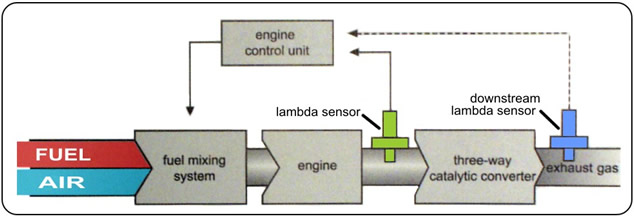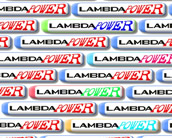 Page 3
Page 3
Closed-loop and open-loop
An average ECU using a narrowband sensor will generally only use the lambda sensor's output during two specific conditions:- (a) during idle, ie. when the engine is under no load apart from keeping itself running, and (b) during part-load conditions (which we usually term 'cruising speed') where the engine is keeping the car at a constant speed. These two conditions account for the majority of the car's operating time.
A car equipped with a wideband sensor is able to usefully use the lambda signal over a wider range of operating conditions but it is still mostly utilised around stoichiometry or during lean-burn operation.
The ECU will generally ignore the lambda sensor's output during three further conditions:- (c) when the car is accelerating - the ECU will spent much of its time deliberately enriching the mixture to avoid hesitation and to provide extra power, and (d) when decelerating or 'engine braking' (which we usually term 'on the over-run'), when most ECU's will shut off the fuel completely to aid economy.
Finally condition (e) is a special case - that of cold starting, where the ECU deliberately runs the engine rich all the time to promote quick starting and ease cold-running. Once everything is up to temperature, normal operation will resume. Depending on manufacturer, a special type of Lambda sensor may be specified that has an extra quick heat-up time which means as soon as rich running is not needed anymore, the lambda is ready for operation.

During conditions (a) and (b), the ECU is said to be operating in 'closed-loop mode', and in conditions (c) and (d) the ECU is said to be in 'open-loop mode'. A correctly functioning lambda sensor will ease the transitions between these two modes.
That means the ECU will be operating as designed with accurate feedback as to the combustion efficiency. If the sensor is worn or damaged, it will not be 'set-up' properly prior to transition, so hesitation may occur. Also a rough or inconsistent idle may occur, or a loss of power at cruising speed.
This is because the ECU is acting upon false information from the worn sensor, which will not be a true measure of combustion. As the resulting air-fuel mixture is inaccurate, the engine will not run properly.
A wideband sensor will measure the varying mixture over a much wider range, so the distinction between closed and open loop is not a clear one. However, in most road-going vehicles the ECU does not use the wideband sensor output during rich running conditions, instead using its advantage to control fuelling during lean running conditions, which results in improved fuel economy and lower emissions.

